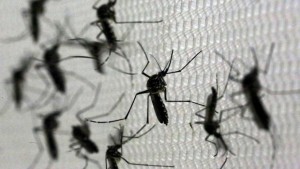
Exercise-related headaches are common. Know when to seek medical help
Bengaluru-based marketing professional Vyom Bachani, 38, gets a headache after any vigorous exercise—running, skipping or elliptical training—coupled with a surge in body heat. Sometimes a cool-down keeps it at bay, sometimes it does not. He never has headaches otherwise.
Exercise headaches typically occur during or after strenuous workouts. The blood-starved muscles of the head, neck and scalp require more blood for circulation during any kind of physical exertion, including exercise. This results in the expansion of blood vessels, causing an exertional headache.
Doctors categorise exercise headaches into primary and secondary. While primary headaches are usually harmless, secondary headaches can be life-threatening and needs immediate medical attention.
Primary exertion headache or PEH: The majority of headaches are primary, often seen in people in the 20-40 years age group. Migraine and tension headaches are the common types. An exercise headache is a type of primary headache, usually linked to vigorous training in the heat, high altitude or humidity. “Primary exertion headache (PEH) is more common among men than women and is caused by exercises,” says Chennai-based Dr Dobson Dominic, medical director, s10 Health Sports Lounge. “The pain usually comes on suddenly, could be unilateral or bilateral and is often pulsatile and lasts from 10 minutes to 48 hours. Nausea, vomiting, phonophobia [sensitivity to sound], or photophobia [sensitivity to light] are a few symptoms that could also appear with a headache,” says Dobson, who is also sports medicine consultant, Chettinad Academy of Research and Institute and program chairman, MMSC sports and exercise medicine, Texila American University. “An exercise headache is common in people who have a history of migraine or who do strenuous workouts,” says Dr P.R. Krishnan, consultant neurologist, Fortis Hospital, Bengaluru.
Secondary headache: A headache is secondary when an underlying condition causes the pain. While some secondary headaches such as cervicogenic headache are not harmful, a few are serious in nature. “There can be different types of secondary headaches depending on the cause,” says Dr G.P. Dureja, director, Delhi Pain Management Centre. “Secondary headaches are not common, but if they occur, they need urgent medical attention. When there are frequent headaches that disturb the daily routine or when it causes problems in hearing or vision, it indicates secondary headache,” says Dr G.N. Goyal, interventional spine and pain management specialist, Delhi.
Not just exercise
Various triggers are perceived to cause headaches. “Exercise could dilate the arteries or veins, which are pain sensitive. It is prevalent in people with internal jugular vein valve incompetence (IJVVI). IJVVI results in backward venous [blood] flow, which leads to brain congestion and increases pressure within the skull leading to a headache,” says Krishnan. “PEH occurs due to muscle constriction because of increased blood supply to the affected muscles. This causes muscle spasm resulting in headaches,” says Dureja.
Several factors could trigger a primary headache. “PEH is more likely to occur due to high altitude, change in weather, or if there is an intake of alcohol or caffeine before exercise. Dehydration, increased blood pressure, holding of breath while lifting heavy weight or incorrect neck position may cause an exertional headache,” says Dobson. Goyal says unhealthy diet, stress, and lifestyle that does not balance work and rest are some of the triggers.
Secondary headaches are serious. The underlying cause could be medical problems such as infections, blockages, bleeding and abnormalities. “Secondary headaches can occur due to intracranial bleeding, rupture of blood vessels in the brain. Here, the headache is accompanied by nausea and vomiting. Secondary headaches do not respond to conventional medicines,” says Dureja.
“Bleeding because of trauma or a medical condition like hypertension, or structural changes in the brain that are prone to rupture of the blood vessels can lead to secondary headache,” says Goyal. A cervicogenic headache is a common and under-diagnosed problem, he says, where the pain could start from the neck and involves back of the head or vice versa.
“When there is a severe headache, which peaks suddenly, known as a thunderclap headache, it is because of blood leakage in the brain. A headache which progressively increases and continues for more than 48 hours or severe one-sided headache indicates structural issues. Evidence of fever, weakness of limbs, trouble with speech or balance, loss of consciousness, seizure, or a headache that wakes a person from sleep, weight loss that occurs along with a headache are a few signs that indicate the need for urgent medical attention,” says Krishnan.
Goyal explains that nausea and vomiting are common in primary and secondary headaches. It is a red flag for a secondary headache if there is persistent vomiting. Seizures, changes in vision, hearing or speech are also a few warning signs of a secondary headache. “Seek medical attention if the frequent headaches are not responding to painkillers and rest,” says Dureja.
Block the way
Benign exertional headaches are manageable with lifestyle modifications and change in exercise routine. “You can reduce the occurrence of exertion headaches with good warm-up exercises, cooling and ventilation in training settings, adequate sleep, nutrition and hydration,” says Dobson.
Krishnan mentions that lowering the intensity of the workout and being well hydrated are useful in the prevention of exertional headaches. “Finding the headache trigger is very critical to managing a primary headache. A person can maintain a pain diary where he can log the severity, period, food taken, any other condition that he experiences during a headache. Such a journal is useful in narrowing down the cause and preventing primary headaches,” says Goyal. Relaxation techniques such as deep breathing, meditation and yoga help prevent primary headaches.
According to Dobson, following can help in avoiding PEH:
Breathe well: Avoid Valsalva maneuver (forceful exhalation with mouth and nose firmly closed) during multiple repetitions of weight lifting. Exhale during the positive phase (when you raise the weight) and inhale during the negative phase (when you lower the weight).
Neutral spine: Maintain a neutral spinal alignment to allow proper circulation through the arteries and veins. It is not essential to keep the back straight when you look up during a squat or a deadlift. Keep the neck and head in a neutral position.
Safety: Larger compound leg movements at the beginning of the workout are safer because exhaustion, exercise induced dehydration and peaking heart rate won’t trigger at the start of the training.
Fitness: Develop cardio respiratory fitness with regular cardiovascular training. General conditioning along with interval training reduces the risk of exertion headaches by developing a healthy cardiovascular system to handle stress. It is necessary to build proper cardiovascular health, stay hydrated and maintain a neutral spine.
Source: http://www.theweek.in/features/lifestyle/exercise-related-headaches-are-common.html




